All about planting blueberries in spring
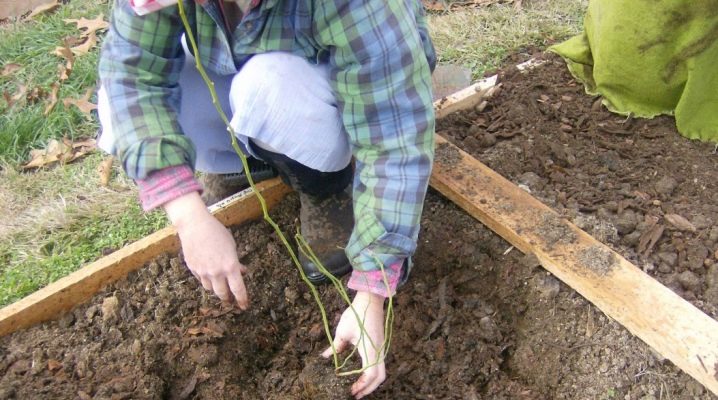
While growing blueberries has its own challenges, the resulting sweetest berries are worth the effort. One of the main conditions for growing a crop is the right choice of place and soil.
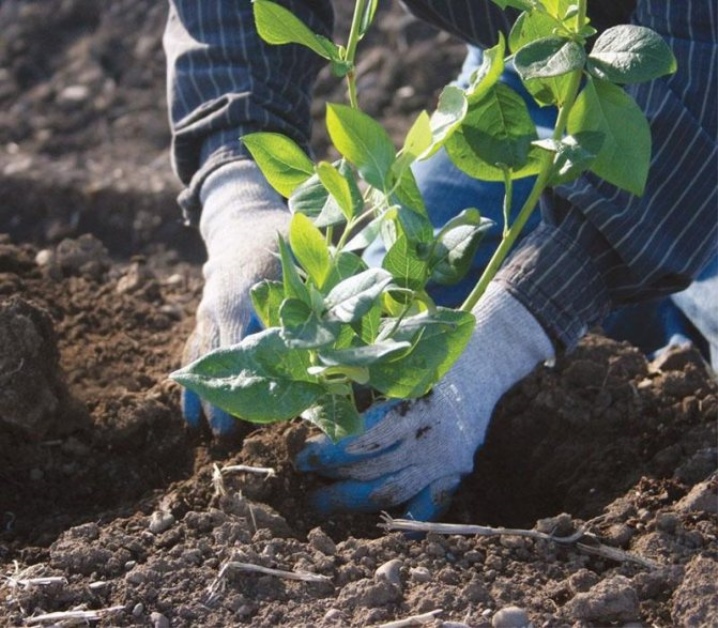
Timing
Planting blueberries outdoors in spring depends on which variety of seedlings you have chosen. Closed-rooted specimens are suitable for both spring and summer planting, except on very hot days. However, it is best to carry out the procedure in April, that is, when the snow has already completely melted, but the soil will still retain some moisture and warm up to at least +5 degrees. Seedlings with an open root system are planted in the summer cottage only in the spring, until the juices begin to move and the buds swell.
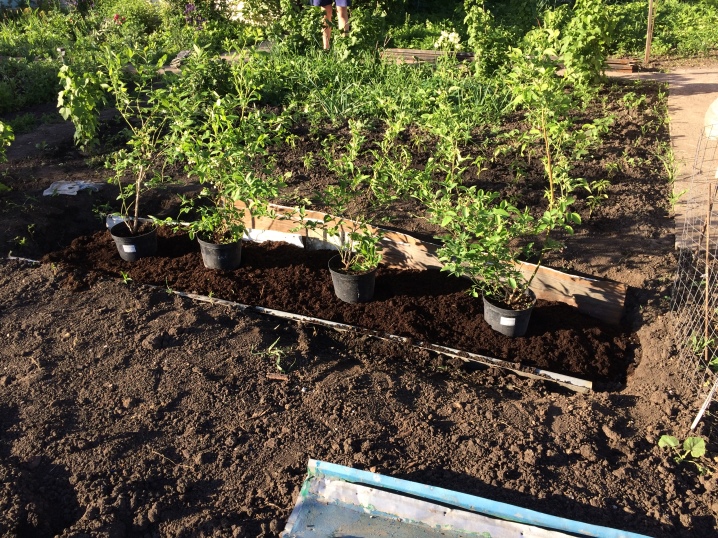
You have to choose the time on the basis of the climatic features of the region. So, for the middle lane, including the Moscow region, mid-April is considered optimal. In the Urals, Siberia and the Leningrad Region, work is shifted to early May. In the south - in the Krasnodar Territory - the landing is allowed to be carried out first of all, in March. But in the Kuban too, you need to be guided by the weather conditions, spring there also brings surprises in the form of return frosts. In Belarus, the procedure can take place throughout the spring. The main condition is to wait for the snow to melt and the earth warms up, but be in time before the sap flow begins.
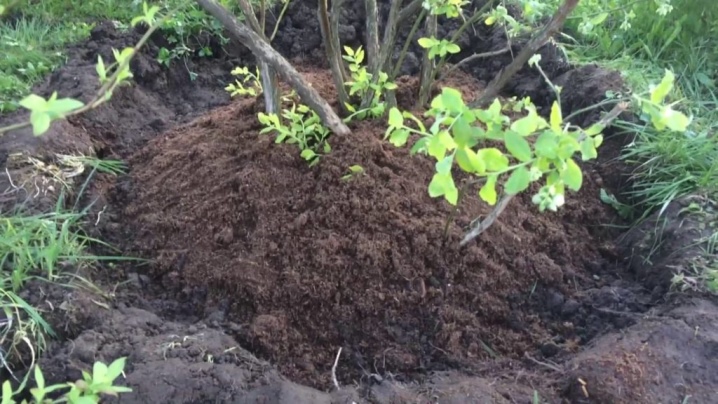
Selection and preparation of a seedling
For planting blueberries, as a rule, seedlings with a closed root system, placed in a container, are used. Open-root instances are used to a minimum. In a nursery, it is better for a gardener to choose a seedling 2-3 years old, which has a good annual growth and several strong shoots, the age of which does not exceed a couple of years. The seedling, of course, must be absolutely healthy, and on its surface there should not be any specks, dried tips or incomprehensible formations, wounds, cracks or signs of disease. Since we are talking about plants sold in containers, well-developed root processes should be visible from the holes in the bottom of the container.
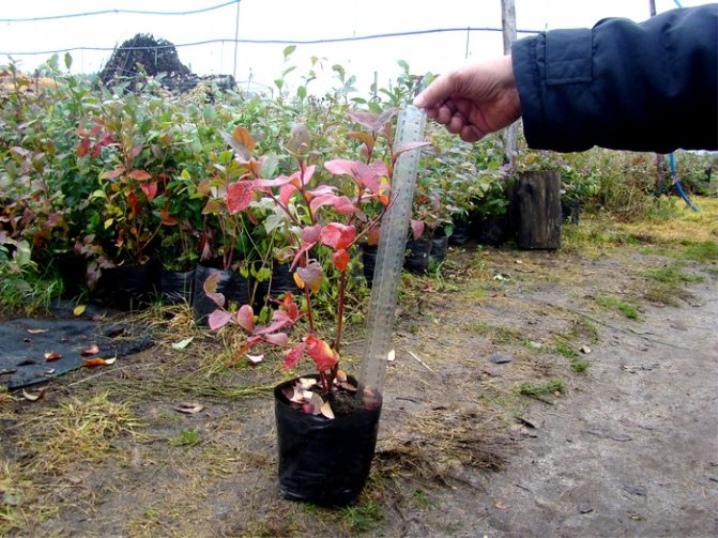
It will be correct to assess the condition of the land in which the plant is located - it cannot be overdried. Strong and dense branches of a bright green color should have buds.
A few hours before planting, the planting material is well watered. Before direct transfer to open ground, it will need to be carefully removed along with the earthy lump from the container. If the roots turn out to be bent towards the center of the bottom, then they will need to be given a horizontal position so that they look evenly to the sides. Most likely, for this, the earthen lump will need to be slightly disassembled.
It is also possible to place the seedling in a small container filled with water for about a quarter of an hour before planting, and then, when the ground is wet, place it in the open ground.
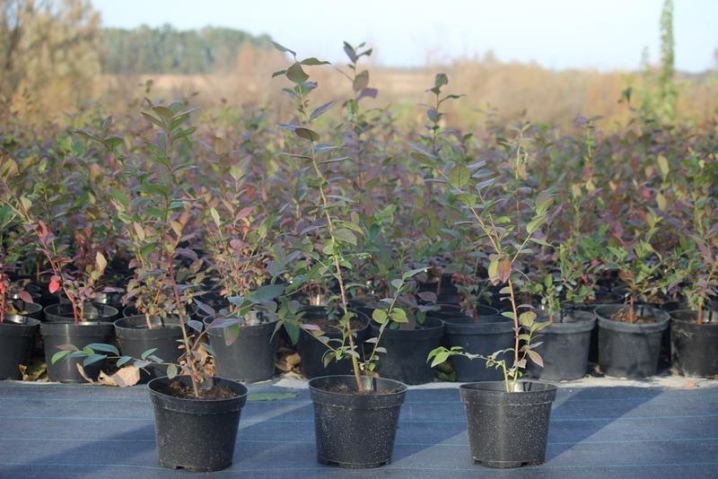
It should be mentioned that a seedling damaged after transportation is quite realistic to restore.
- The first method involves dipping most of the plant in water for a couple of days. To achieve the desired result will allow the addition of 12 drops of camphor alcohol to each liter of water.
- In the second case, weakened or damaged shoots are either completely removed or shortened by 1-3 centimeters.
- Finally, decaying root branches are allowed to be completely cut off, and the damaged central root can be treated with a 3% solution of copper sulfate.
- Before planting, such a seedling must be dipped in a solution that stimulates the formation of roots.

Site and soil selection
The place where the blueberries will be planted should be very well lit for at least 6-8 hours and not be exposed to drafts. In principle, the culture is able to develop in conditions of partial shade, but then one should expect a decrease in the size and deterioration of the taste characteristics of the fruit. In addition, it is highly likely that the lack of lighting will slow down the development of the bush, which means that its inability to woody by winter and survive frosty days. Soil mixtures characterized by high humidity are categorically unsuitable for blueberries.
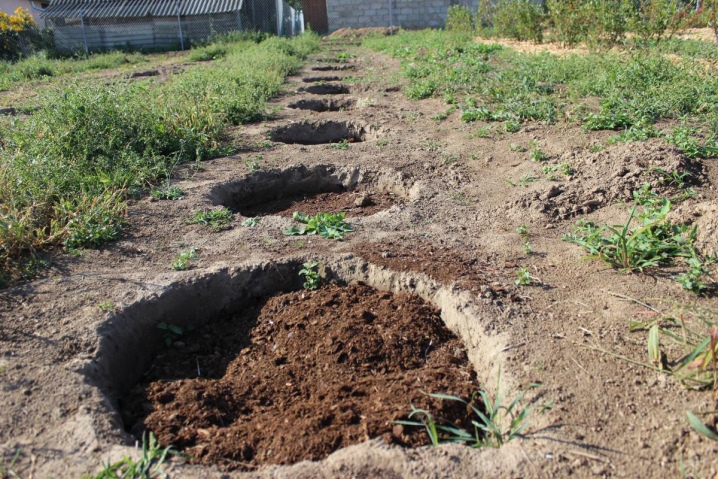
This means that you should not plant seedlings in lowlands, places where precipitation and melt water accumulates, as well as areas where groundwater is close.
The main requirements for the soil are its lightness, looseness and air permeability. The acidity level should not go beyond the pH range 3.5-4.5. The culture will feel best of all on a peat or sandy loam mixture, and worst of all on heavy and clayey soils. Gardeners do not recommend planning blueberry beds near plants that prefer neutral soil. The best neighbors for berries will be the same "lovers" of acidic soil, that is, lingonberry, cranberry, azalea or heather. It should be emphasized that blueberries are able to bear fruit exclusively on acidic soil, since such conditions are required by ericoid mycorrhiza, which helps the culture to extract nutrients from the soil. By the way, sorrel and mint are considered optimal precursors for blueberries, which also prefer sour soil.
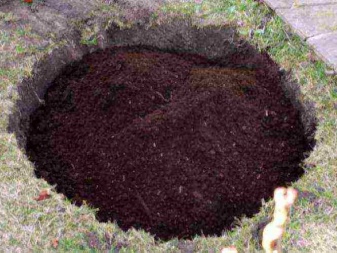
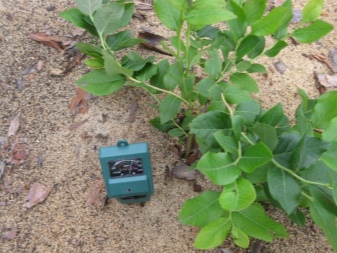
To normalize the acidity level to fill the pit, it will be possible to prepare a special mixture of sand, peat, sawdust, fallen leaves, needles, tree bark and 40-60 grams of sulfur. An alternative would be to water the soil with a combination of malic, citric and acetic acids.
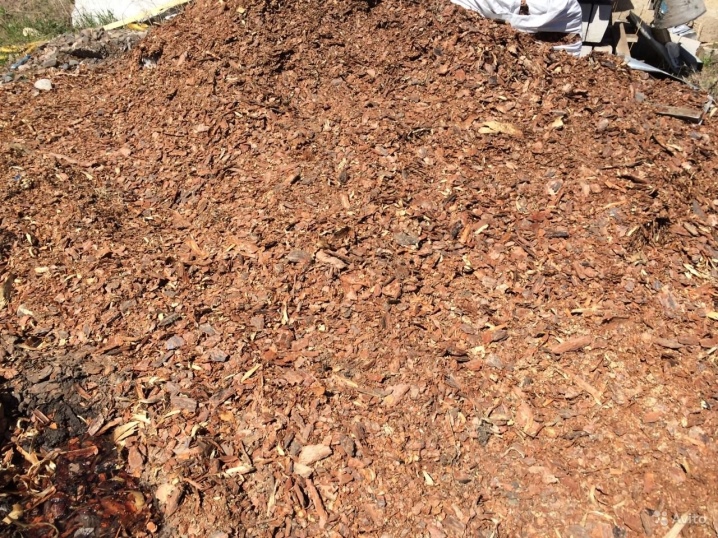
How to prepare a pit?
Preparing the blueberry planting pit is always done in advance.
- The standard hole depth and width is 50 centimeters, but most often gardeners increase these indicators to 60-70 centimeters. Since the roots of the culture are actively growing, it is better to immediately create a larger depression. In the event that it is planned to plant several seedlings at once, the distance between the pits should be maintained at 1-1.5 meters. The same spacing will be required for the row spacing.
- It will be correct to plan the planting pit, depending on the characteristics of the soil. For heavy loam, wide, but not very deep holes are suitable. A great depth in this situation, rather, will contribute to stagnation of moisture and decay of the root system. A hole 60 centimeters wide and 40 centimeters deep should be dug on light loam. Heavy clay areas require digging out ridges - holes 10 centimeters deep in which a mound will form. For sandy and peaty lands, depressions with a diameter of 1 meter will be required, extending 50 centimeters into the soil.
- It is extremely important to pre-fence the plant's root system from ordinary garden soil that does not have the required acidity. For example, this can be done using bricks, slate sheets or other reliable material suitable for forming the sides. The bottom of the pit will need to be laid out with drainage material - large coniferous bark, pebbles or sawdust. The resulting layer should be 10 to 20 centimeters thick.
- A mixture of high bog peat is suitable for refueling the planting pit., rotted needles and yellow sand, moreover, the first component should be 60%, and the other two - 20% each.It is worth immediately applying sulfur fertilizers - ammonium sulfate or colloidal sulfur. It is also suggested to fertilize the garden with potassium sulfate or "Superphosphate".
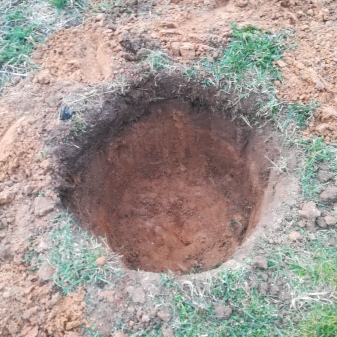
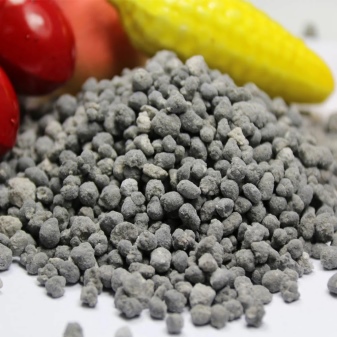
How to plant correctly?
It is necessary to plant garden blueberries in the country in accordance with some rules. It all starts with the formation of a mound of nutrient mixture in the center of a previously dug and partially filled hole. However, if the roots of the seedling were not straightened in advance, and the earthen lump remained intact, then it will be enough just to put it in the hole. Next, the pit is filled with soil in such a way that the root collar deepens by about 7 centimeters.
It is important that the earth is distributed evenly, filling all voids. To simplify the task, you may need to gently shake the trunk of the plant.

In the near-trunk circle, the soil is compacted with the palms, and then a circular groove is pulled out around the blueberries for irrigation. The culture is watered abundantly by directing 3 to 4 buckets of clean settled water under each bush or with a composition that stimulates root growth.
It is recommended to pour out the moisture gradually: first, use one bucket, wait until the liquid is absorbed, and move on to the next.
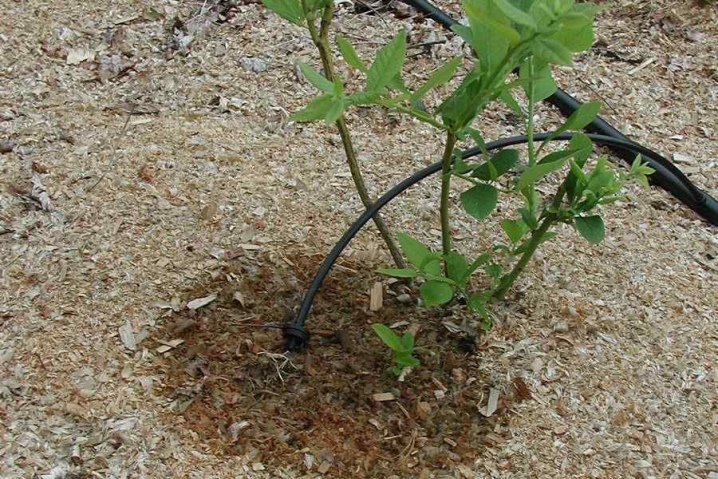
In addition to the basic method, it is possible to plant blueberries in the garden in other ways. Gardeners' recommendations indicate that planting in ridges is more suitable for clay soil. In this case, after digging a hole 15-20 cm deep, a mound of peat, sawdust, sand and earth is formed in it. Further, the seedling is simply placed on top of the elevation, and its roots are located at ground level. At the end, the space near the stem is covered with a layer of sawdust 8-12 centimeters thick. The correct solution is to install around wooden plank mountings that support the ridge and prevent it from eroding.
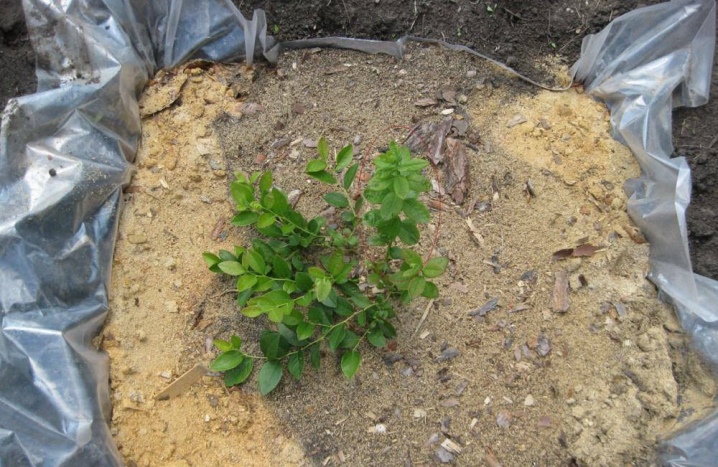
Growing crops in bags or plastic containers is suitable when blueberries are grown in large volumes or in confined spaces. In this case, the seedlings are immediately placed in bags filled with peat or soil with the required acidity level. In the absence of peat, the planting mixture is replaced with ordinary garden soil, fed with sulfur or coniferous substrate. In principle, some gardeners prefer to plant only in coniferous litter - a layer of earth dug under coniferous trees at a depth of 7-9 centimeters. Pine litter is best used, although spruce, despite the lower pH, will also work. In this case, it is proposed to use the top layer as a mulching material.

Follow-up care
After planting, you have to take care of the crop according to the basic scheme.
- Immediately, the trunk circle is mulched with rotted coniferous needles or pieces of bark, lined with a layer 6 centimeters thick. Sour peat, combined with both needles and bark, can also be used to prepare a mulch mixture. It is customary to combine the components in equal proportions with sand or hay.
- Often it is not necessary to water the culture - even if the summer is hot, 2-3 times a month is enough, and 1-2 buckets will need to be poured for each shrub. During prolonged rainfall, the frequency of the procedure is reduced. Watering should be accompanied by spraying the aboveground part, removing weeds and gentle loosening that does not injure the root system and deepens by no more than 5 centimeters. If the soil settles, then it will need to be filled up to the previous level.
- If the soil initially had to be made more acidic, then watering should be periodically accompanied by the introduction of citric or acetic acid. To do this, once a week or every two weeks for blueberries, you will need to prepare acidic water from 100 milliliters of 90 percent vinegar and 10 liters of water. It will be even easier to dilute 1 teaspoon of citric acid in 3 liters of base or use a special acidifier.
- Top dressing in the first year of the blueberry habitat in the open field is not required, since the substances introduced into the pit are quite enough for the development of the seedling. From next year, it is recommended to give preference to complex formulations suitable for the culture. They should be used mainly before the swelling of the kidneys.
- Closer to winter, it will be necessary to think about the protection of seedlings. It is most reasonable to insulate the root system with the help of agrofibre, since polyethylene contributes to the formation of condensation, and therefore to rotting of the root system. A fine mesh made of metal or plastic will help protect the trunk from rodents.
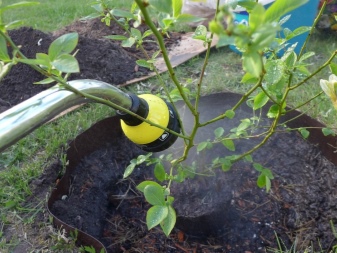
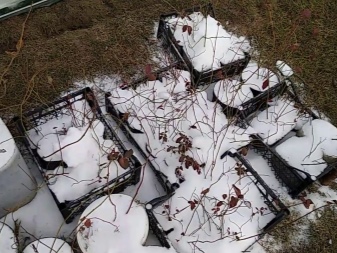













The comment was sent successfully.